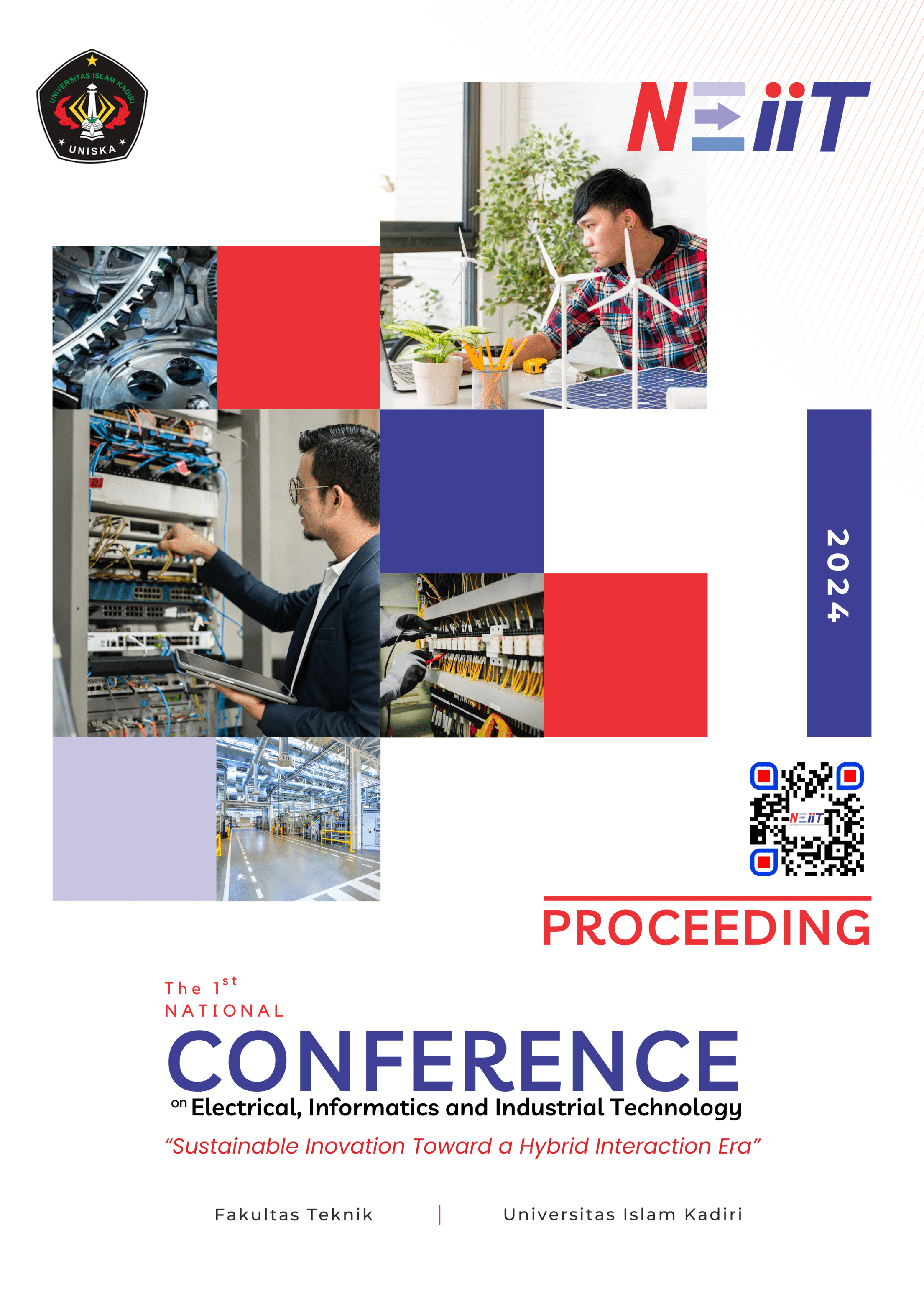Rancang Bangun Robot Kapal Pembersih Sampah Tenaga Surya Menggunakan Modul ESP32-CAM Dengan Kontrol Melalui Smartphone
Keywords:
Solar Power, Waste Wireless, ESO32-CAMAbstract
Increasing human growth causes the need for raw materials to increase, which ultimately results in an increase in the amount of waste. Garbage that accumulates in water channels can cause flooding. Manual cleaning of water channels by the community requires more time and energy. For this reason, a solar-powered trash cleaning robot ship was created using the ESP32-CAM module with control via smartphone. This robot uses wireless control via smartphone so it is easier to operate. In testing battery charging on a day with cloudy weather conditions, an average power of 2.24W was obtained, on the second day with mostly cloudy weather conditions an average power of 3.37W was obtained and on the third day with sunny weather conditions, an average power of 3.37W was obtained. average of 4.05W. In the battery usage test, on the first day the duration was 35 minutes, on the second day it was 65 minutes and on the third day it was 75 minutes. The robot can function well at a maximum distance of up to 20 meters without obstacles and when obstructed the maximum distance is only up to 6 meters. The conveyor is capable of lifting a maximum load of waste weighing 250 grams, if it is more than that then the conveyor will not be able to lift the waste. The maximum capacity of rubbish that can be accommodated in a rubbish bin is 1.8 kg.
Downloads
References
R. Patar Pasaribu et al., “Prototype Robot Kapal Pengangkut Sampah Di Perairan Prototype of Waste Transporting Boat in Waters,” pp. 1–10, 2024, [Online]. Available: http://dx.doi.org/10.15578/marlin.V5.I1.2024.1-10
I. Arifin, M. Sari, and P. W. Ciptadi, “Kapal Pemungut Sampah Menggunakan Arduino,” Semin. Nas. Din. Inform. Univ. PGRI Yogyakarta, pp. 204–207, 2021.
M. Mauliadi et al., “Rancang Bangun Robot Boat Pemungut Sampah Di Perairan Waduk Lhokseumawe Berbasis Mikrokontroler,” J. Tektro, vol. 4, no. 2, p. 68, 2020.
K. Abimanyu, S. Rohman, A. Setya, and P. Octa, “Garbage Carrier Roboboat Based On Image Processing,” Telekontran J. Ilm. Telekomun. Kendali dan Elektron. Terap., vol. 7, no. 1, pp. 25–41, 2019, doi: 10.34010/telekontran.v7i1.1636.
S. Budiharjo and R. S. Putra, “Rancang bangun model perahu mini robot pembersih sampah di sungai menggunakan android berbasis arduino uno,” J. ICT, Dioda, 2016, [Online]. Available: http://ejournal.akademitelkom.ac.id/index.php/ictjurnal/article/view/110%0Ahttp://ejournal.akademitelkom.ac.id/index.php/ictjurnal/article/viewFile/110/91
M. Katu, “Robot Kapal Pemungut Sampah di Sungai Menggunakan Mikrokontroler Arduino Uno dengan Pengendali Jarak Jauh (Garbage Collecting Ship Robot on the River Using Arduino Uno Microcontroller with Remote Control),” 2021.
N. Dewi, A. Z. Hasibuan, and A. Sembiring, “Prototype Robot Kapal Pemungut Sampah Pada Permukaan Air Dengan Pengendali Smartphone,” Semin. Nas. Teknol. Inf. Komun., vol. 1, no. 1, pp. 1–8–1–8, 2020, [Online]. Available: http://prosiding.snastikom.com/index.php/SNASTIKOM2020/article/view/5
W. T. Zani and C. E. Suharyanto, “PROTOTYPE PERAHU PENGANGKUT SAMPAH BERBASIS ARDUINO,” Comasie, vol. 07, pp. 19–26, 2022.
M. Aiman, S. Suhaimi, and H. A. Rahman, “Waste Controller Boat by Bluetooth Applications,” Evol. Electr. Electron. Eng., vol. 2, no. 2, pp. 637–641, 2021, [Online]. Available: http://publisher.uthm.edu.my/periodicals/index.php/eeee
N. A. S. Kamarudin, I. N. A. M. Nordin, D. Misman, N. Khamis, M. R. M. Razif, and F. H. M. Noh, “Development of Water Surface Mobile Garbage Collector Robot,” Alinteri J. Agric. Sci., vol. 36, no. 1, pp. 534–540, 2021, doi: 10.47059/alinteri/v36i1/ajas21076.

Downloads
Published
Issue
Section
License
Copyright (c) 2024 Rizki Alfandi, Danang Erwanto, Dian Efytra Yuliana (Author)

This work is licensed under a Creative Commons Attribution-NonCommercial-ShareAlike 4.0 International License.




